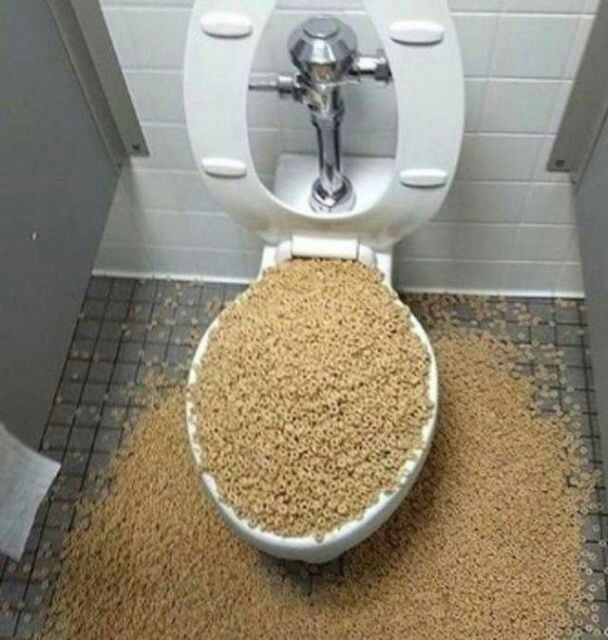Are You Allowed to Flush Food Down the Toilet?
Are You Allowed to Flush Food Down the Toilet?
Blog Article
Just how do you really feel in relation to Flushing Food Down the Toilet??

Intro
Lots of people are typically faced with the dilemma of what to do with food waste, particularly when it comes to leftovers or scraps. One common inquiry that occurs is whether it's fine to flush food down the bathroom. In this article, we'll look into the reasons that people might consider flushing food, the effects of doing so, and different methods for proper disposal.
Reasons why individuals may take into consideration flushing food
Absence of recognition
Some individuals might not be aware of the potential damage caused by flushing food down the toilet. They might mistakenly believe that it's a safe technique.
Comfort
Flushing food down the toilet might appear like a quick and simple remedy to throwing away unwanted scraps, specifically when there's no neighboring trash can offered.
Negligence
In many cases, individuals might simply choose to flush food out of large negligence, without taking into consideration the effects of their actions.
Consequences of flushing food down the commode
Ecological effect
Food waste that ends up in waterways can add to pollution and harm aquatic environments. In addition, the water made use of to flush food can stress water sources.
Pipes issues
Flushing food can result in blocked pipelines and drains, causing pricey pipes repair services and inconveniences.
Types of food that must not be purged
Coarse foods
Foods with coarse textures such as celery or corn husks can get entangled in pipelines and create clogs.
Starchy foods
Starchy foods like pasta and rice can soak up water and swell, causing obstructions in pipelines.
Oils and fats
Greasy foods like bacon or cooking oils ought to never ever be purged down the bathroom as they can strengthen and cause clogs.
Proper disposal approaches for food waste
Utilizing a garbage disposal
For homes equipped with garbage disposals, food scraps can be ground up and flushed with the pipes system. Nonetheless, not all foods are suitable for disposal in this fashion.
Recycling
Certain food packaging products can be recycled, lowering waste and lessening ecological effect.
Composting
Composting is a green method to throw away food waste. Organic materials can be composted and made use of to enrich soil for horticulture.
The significance of proper waste management
Decreasing ecological harm
Correct waste administration methods, such as composting and recycling, assistance lessen contamination and protect natural deposits for future generations.
Shielding plumbing systems
By preventing the method of flushing food down the bathroom, homeowners can stop pricey plumbing repair services and keep the honesty of their plumbing systems.
Final thought
In conclusion, while it might be tempting to purge food down the commode for ease, it is necessary to understand the prospective consequences of this activity. By taking on proper waste monitoring techniques and disposing of food waste sensibly, people can contribute to healthier plumbing systems and a cleaner environment for all.
FLUSH FOOD DOWN THE TOILET?
FLUSHING FOOD CAN CAUSE BLOCKED DRAINS IN YOUR HOME
All of the plumbing fixtures in your home are connected to the same sewer pipe outside of your home. This outdoor sewer pipe is responsible for transporting all the wastewater from your home to the Council sewer mains. Even small pieces of food that go down the kitchen sink can cause problems for your sewer. It should therefore be obvious that flushing larger bits of food, such as meat, risks a clog in either the toilet itself or the sewer pipes. Flushing greasy food is even more problematic because oil coagulates when it cools, coating the interior lining of your pipes.
THE TOILET IS NOT A BIN
Food isn’t the only thing that people shouldn’t be flushing down the toilet. People use the toilet to dispose of all kinds of things such as tampons, makeup wipes, dental floss, kitty litter and even underwear. Water goes to great lengths to educate residents about the high costs and stress placed on wastewater treatment systems simply from people flushing the wrong stuff down the toilet. It costs taxpayers millions of dollars each year, and homeowners thousands in blocked drain repairs.
FLUSHING FOOD IS A WASTE OF WATER
Flushing food is a waste of our most precious resource - water. In June this year Level 1 water restrictions were introduced to protect water supply from drought conditions. Much of New South Wales continues to be affected by prolonged drought with recent figures revealing up to 97 per cent of the state remains in drought. Depending on whether you have a single or dual flush toilet, every single flush uses between five and 11 litres of water. In the current climate this is a huge amount of water to be wasting on flushing food that should be placed in the bin (or better yet, the compost).
https://www.jabplumbingsolutions.com.au/blog/can-you-flush-food-down-the-toilet

We hope you enjoyed reading our excerpt on Think Twice Before Flushing Food Down Your Toilet. Thank you so much for taking a few minutes to browse our piece. Loved our post? Please share it. Help others discover it. I appreciate your readership.
Schedule Report this page